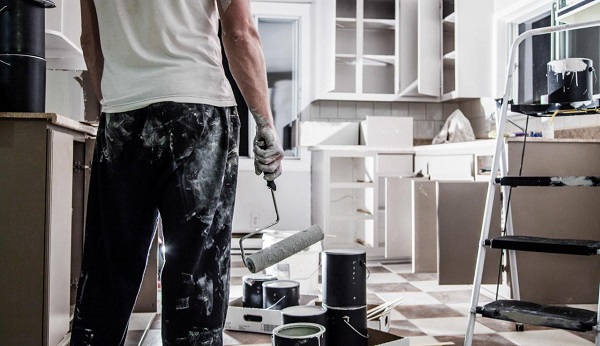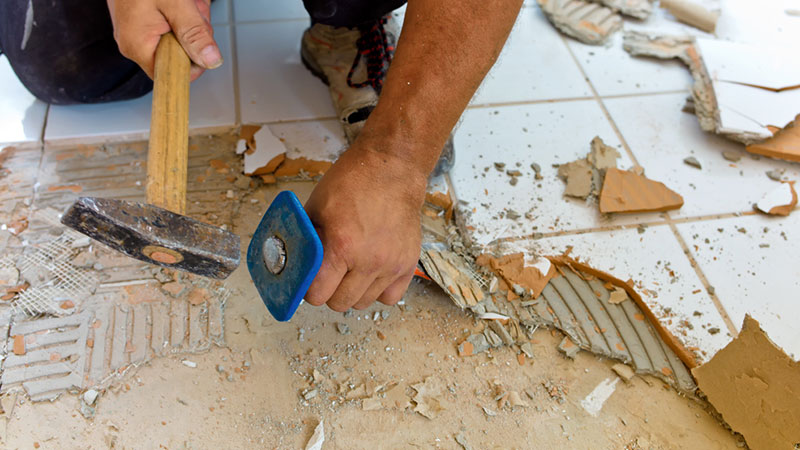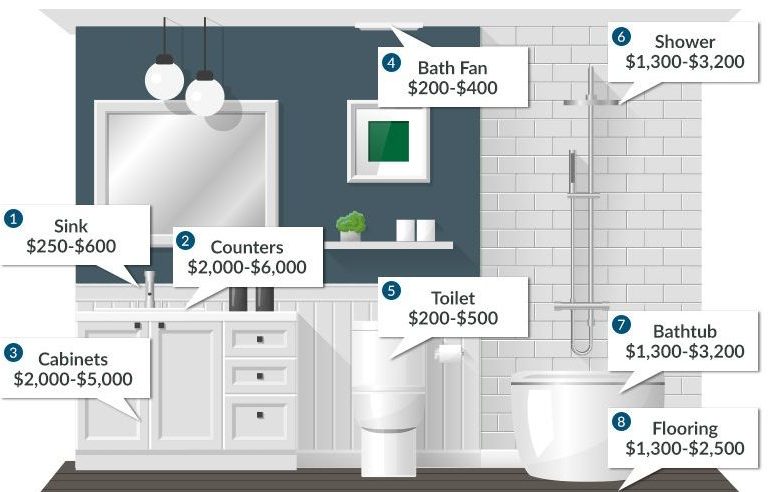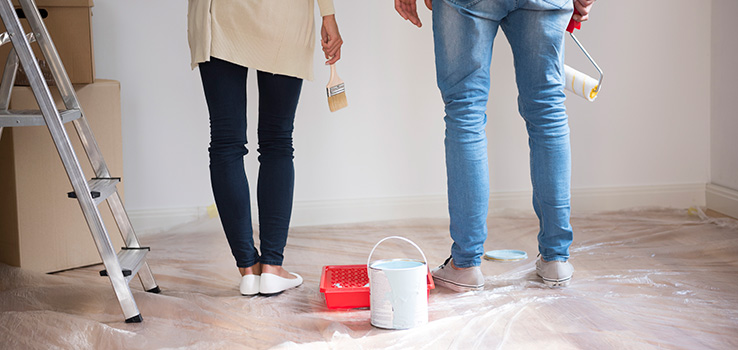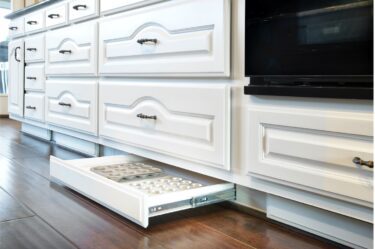
Photo Source
Whether you’re embarking on a major remodel or simply completing some minor updates throughout the house, just about every home project has its fair share of struggles. We all tend to have the mindset that renovations are pretty straightforward and can be completed in as little as a week or two (maybe it’s all that HGTV that makes it seem so much easier than it really is!) The reality is that even the simplest home projects often turn out to be more complicated than initially expected. It’s usually at the point of no return when you realize it’s not going to be the piece of cake you had hoped for. This can certainly be a humbling experience; to realize you’re going to need some help to get the job done right (we’ve all been there!)
If your home is past due for a face-lift and you’re ready to get serious about remodeling, consider these 5 hidden ways you might sabotage your own remodel, and how to avoid making it harder than it has to be:

Photo Source
1. Jumping in on a Whim
In many cases, the initial desire to remodel your home is an emotional one. Perhaps you saw a kitchen transformation on TV, or maybe a friend of yours just completed a remodel. Upcoming events, celebrations, or holidays can also trigger an impulse to update your home. While there is nothing wrong with acting on these emotions, it’s important not to jump in too early without a plan. Strategically planning your remodel provides the groundwork for a successful and positive experience.
Part of what we do at Medford Design-Build is provide a clear plan of action to complete your project via a custom design package. This package includes floor plans and 3D renderings of the remodeled space, along with a detailed scope of work to outline all that will be done. Everything from the conceptual design to the total budget, the material selection, and construction dates are laid out before you, so you know exactly what to expect throughout the entire process.

Photo Source
2. Hiring a Handyman instead of a Contractor
Our recent blog, “Home Repairs & Modification: Do I Need a Handyman or a Contractor?” explains the difference between the two and which is the best fit for your specific project. Generally speaking, a handyman is best utilized for small updates and repairs. Tasks like painting, drywall patching, fixing a plumbing leak, replacing cracked tiles or grout, and scraping popcorn ceilings are some examples of things a handyman could easily address. Larger projects, like a full kitchen renovation, installing a walk-in shower in place of a shower-tub combo, and removing walls are things better suited for a general contractor.
A step above a general contractor is a design-build firm, which will not only complete the construction for you, but will also provide comprehensive designs and project management. Taking this route is a sure-fire way to ensure nothing is missed, that every part of the project is completed correctly and to code.
Who you choose to hire will depend on your specific needs, as well as your personal preference; just remember that you get what you pay for. Taking the cheap way out or opting to manage the project on your own while having little knowledge about the process can be a recipe for disaster! The best advice is to do ample research, read reviews, and ask for references from the contractors you interview before offering them the job.

Photo Source
3. Underestimating Costs
Total cost for your renovation will depend on a number of things: the size and complexity of the project, the professional you choose to hire, the level of management you prefer, and the quality of products and materials used. Unfortunately, home remodeling is almost always more expensive than most homeowners expect. For example, you might think $10K-$15K would be more than enough for a full kitchen remodel. However, the reality is that a standard full kitchen remodel (without taking down any walls) usually comes in at a minimum of $40K. For a full master bathroom remodel, the cost is between $35K-$40K.
Of course, these are not exact figures, but they tend to be the range for the majority of kitchen and bathroom remodels we complete. If you are interested in an exact cost for your remodel, the detailed scope of work document provided in your custom design package would determine a realistic cost based on your project specs.
If you would like information about financing, we can provide you with the contact information for our representative at Frost Bank who can discuss this option with you in depth.

Photo Source
4. Overestimating Your DIY Skillset
An obvious way to save money on a home renovation is to do it yourself. This is the first consideration for those that are crafty or relatively handy around the house. However, as previously mentioned, most home projects end up more complicated than initially expected. One reason for this is that it’s easy to look at an individual project and not the “snowball” of projects that will follow in sequence. For example, if you’re painting the cabinets in your kitchen, you may not consider that you will also have to paint the baseboards and trim around the entire room, and potentially the neighboring rooms. More often than not, if you paint the trim, the ceiling will look dingy or faded, which would then require fresh paint as well. But you know, if you’re painting the ceiling, you might as well get rid of that dated popcorn texture, right? As you can see, it’s easy for a simple project to escalate into something much larger – requiring more time, money, materials, and possibly another skillset. Not only could this create a stressful burden on you as the homeowner, but if you start a project without adequate knowledge or skill to complete it, it could end up costing you much more to hire a professional after the fact than it would have if you had hired them at the start.
Photo Source
5. Buying Cheap Products
Another part of the custom design package we provide is the Budget Items worksheet. This section of the proposal lists out your line items – items with set pricing such as appliances, flooring material, countertops, etc. The total of these items would be added to the cost of materials and labor, providing your bottom line cost for completion. Our talented Interior Designer is more than happy to help you in selecting these items, but as the homeowner, you are the one that makes the final decisions. Choosing low-quality products in order to keep the total cost down is not something we recommend. Cheap products tend to have a shorter life span and are more susceptible to damage and repairs. You certainly don’t need to buy the most expensive products on the market, but make sure you factor in quality when planning your project. The last thing you want is to have additional work to do in your new kitchen or bathroom as soon as construction is complete!
Remodeling your home can be difficult, but it doesn’t have to be! Avoiding these 5 things will keep you from accidentally sabotaging your remodel and get you on track for a great experience. Our team of professionals would be happy to help you with every phase of your project, from concept to completion! For more information about the process, contact us today!
Warm Regards,
The Medford Design-Build Team


